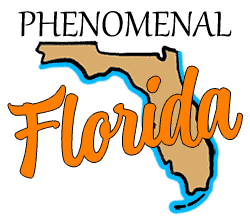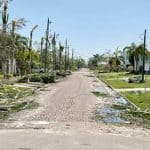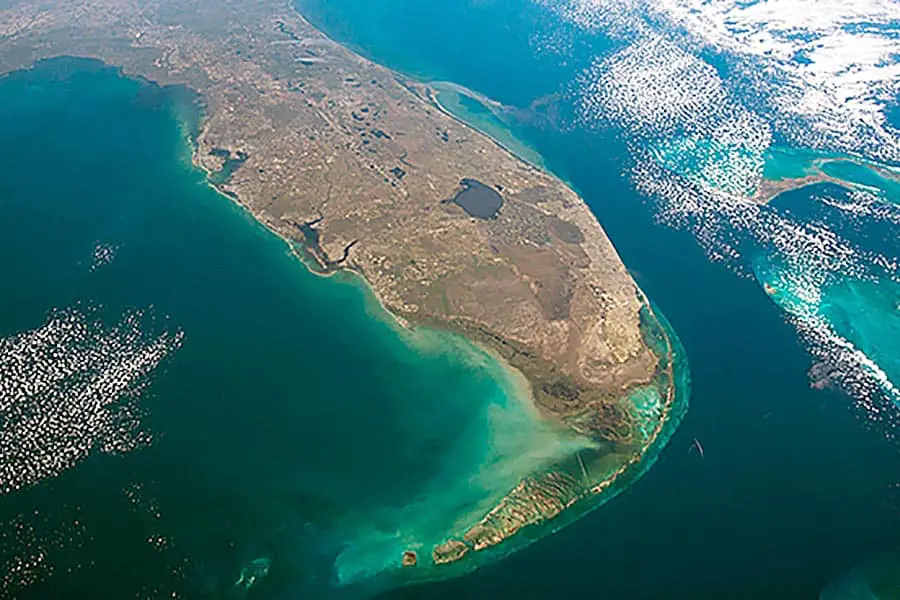
When you look at a view of Florida from above, you’ll find it hard to miss the enormous lake that sits in the southeastern portion of the Florida peninsula. This massive body of water is Lake Okeechobee, one of the Sunshine State’s most famous bodies of water. But is Lake Okeechobee saltwater or freshwater?
Lake Okeechobee is a freshwater lake. While you can sail from Lake Okeechobee to the salty waters of the Atlantic Ocean or the briny shores of the Gulf of Mexico, the lake itself is freshwater. Lake Okeechobee’s freshwater sources are natural rainfall and the Kissimmee River.
So how does water flow in and out of Lake Okeechobee? Are there big waves on the lake? Is it very deep, and are the rumors of sharks, gators, and crocodiles true? Learn the answers to these Lake Okeechobee questions and more in the following sections.
Lake Okeechobee: Florida’s Inland Sea
Lake Okeechobee was named by the Seminole people long in the past, before Europeans settled Florida. The name “Okeechobee” is derived from the Seminole words “oki,” which means water, and “chubi,” which means big. The name “Big Water” is very apt for this lake, which has a surface area of about 730 square miles.
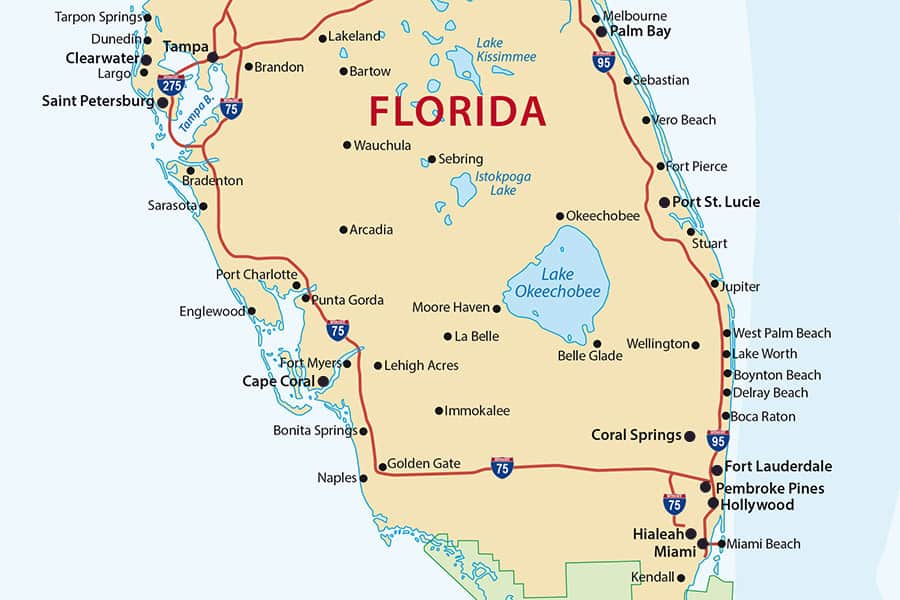
That 730 square miles of water contains about a trillion gallons of fresh water. The lake has about 135 miles of shoreline that weave through five counties.
It even sports a few islands that once held farming settlements; however, the muddy ground and difficult conditions proved too challenging for even the hardiest of Florida’s farmers. As a result, the islands are now abandoned and unpopulated.
The lake is located in the southeastern corner of the Florida peninsula, about 45 miles west of West Palm Beach. Despite the lake’s size and its location in south Florida, much of the area around the lake is relatively rural.
Towns near the lake include Okeechobee, population 5,724; Clewiston, population 7,781; and Buckhead Ridge, population 1,634. You won’t find a huge shopping mall or acres of subdivisions near Lake Okeechobee.
The water in Lake Okeechobee comes from two primary sources: rivers and rainfall. The Kissimmee River drains into Lake Okeechobee, as do dozens of smaller tributaries and streams.
Phenomenal Florida Fun Fact: Despite its enormous size, Lake Okeechobee is only about nine feet deep on average.
In fact, Lake Okeechobee is connected to both the Gulf of Mexico and the Atlantic Ocean by rivers. You can even sail from the Atlantic to the Gulf (or vice-versa) by crossing the lake! However, most of the lake’s water is drainage and runoff from the lands to the north of the lake, and ocean waters do not drain directly into the lake.
In 1909, when Palm Beach County was created, the totality of Lake Okeechobee was included in the county. This inclusion was a source of irritation to the other county governments whose land touched the lake, and in 1963, the lake was sliced like a pizza to give a slice to every county that borders the lake. As a result, the lake’s waters are now divided among Glades, Hendry, Martin, Okeechobee, and Palm Beach counties.
Lakes in Florida are not generally considered to be very “beachy.” While some do swim, waterski, and participate in other watersports on Florida’s lakes, the state’s geology doesn’t tend to create sandy beaches on lakes. Plus, the presence of threats like alligators and amoebas in lakes makes most Floridians reluctant to swim in freshwater in the state, and this includes Lake Okeechobee.
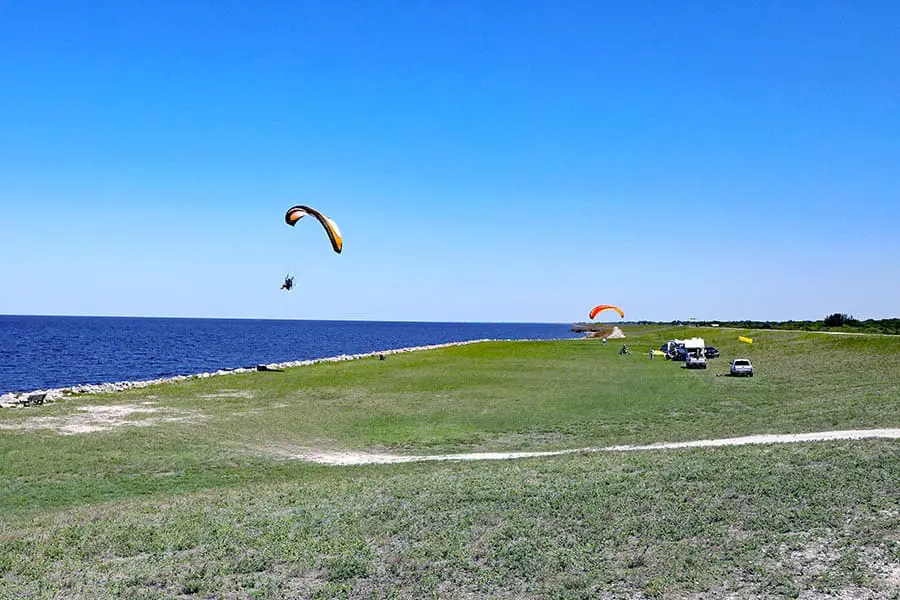
That said, there are plenty of boat ramps and county parks on the lake, and many people enjoy picnicking or relaxing near the lakeshore. Lake Okeechobee is also renowned for having some of the best freshwater fishing in America: bass fishing is extraordinarily popular here, and anglers can catch dozens of different species of fish on the lake.
If you’re a person who enjoys a luxurious Sunday drive, Lake Okeechobee offers a winding route around its 135-mile-long shoreline. Beginning in the town of Okeechobee, motorists can cruise around the lake and enjoy scenic pullouts that let you experience the true scale of the lake from good vantage points.
You’ll pass through historic and unique towns like Pahokee and Clewiston on your trip around the lake, and the curious-minded will find plenty of interesting roadside attractions to stop and see while driving ’round the lake.
Other Posts of Interest
- Is Corkscrew Swamp Part Of The Everglades?
- Are Sturgeon Protected In Florida?
- Are There Sharks In Tampa Bay?
- Why Does Florida Have So Many Canals?
Does Lake Okeechobee Have Tides?
The short answer to this question is no, Lake Okeechobee doesn’t have tides, but it deserves a deeper explanation. Tides are a very interesting phenomena. The gravitational pull of the moon and the sun cause whole bodies of water to shift, causing the reliable rise-and-fall of the tides that we can observe from the ocean’s shore. This tidal motion does affect lakes, but only a tiny bit.
Why? Well, think about the ocean. The tide in the ocean is generally just a few feet, and the ocean is an absolutely enormous body of water that spans the entire globe. Even the biggest lakes are tiny compared to the ocean, so their tidal motion is correspondingly small. So small, in fact, that even the passing of a boat would cause more of a noticeable tide in most lakes.
However, many lakes experience seiches. Seiches are enormous, slow-moving waves generated by strong weather or heavy wind. Much like sloshing water in a bathtub, a seiche is caused by these enormous waves rebounding from one side of a lake to another.
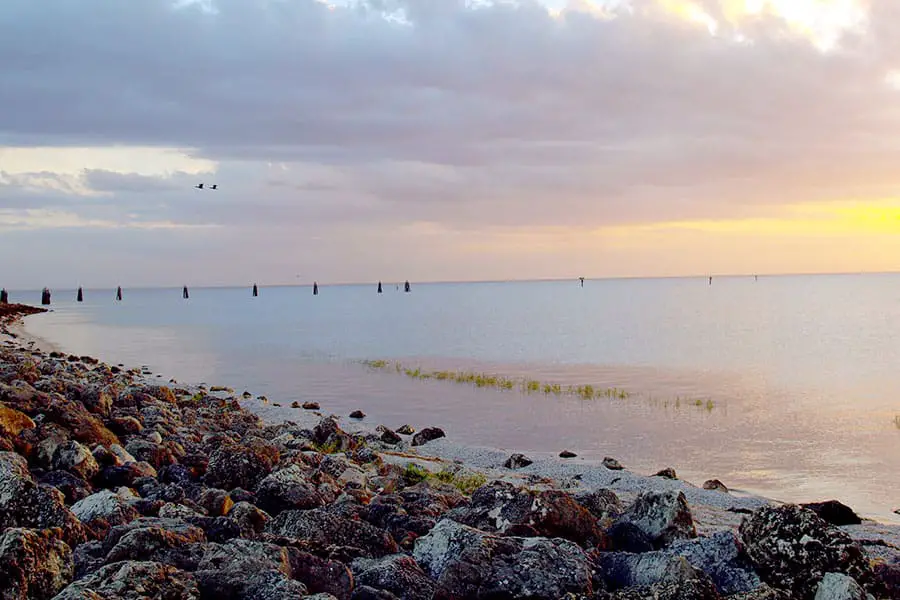
So, where does this leave Lake Okeechobee? It is, after all, an enormous lake. Lake Okeechobee doesn’t experience a noticeable tide, but scientists have consistently observed a seiche of about 10 centimeters on the lake. That’s about 4 inches. In other words, Lake Okeechobee does not have a tide, but it does have a tide-like seiche of approximately 4 inches every 5 hours or so.
Does Lake Okeechobee Have Waves?
Lake Okeechobee is known for having some serious waves. It is a strikingly large body of water: anybody who has been to the Great Lakes will know the feeling of looking out into a lake that may as well be an ocean. Lake Okeechobee’s large size and location in windy and thundery south Florida make the lake prone to large waves.
Fishermen in the lake know to expect waves of up to three feet, which can be moderately challenging to navigate for inexperienced boaters. However, in some cases, particularly breezy conditions have generated waves of six feet or more — at least one vessel has sunk in the lake in windy and wavy conditions.
Where Does Lake Okeechobee Discharge?
Lake Okeechobee holds about a trillion gallons of water. During Florida’s wet season, the lake occasionally receives massive inflows of water from large rain storms both directly over the lake and upstream in the Kissimmee River. In order to prevent flooding, the Army Corps of Engineers has built several dams and outflow structures that route excess water to the Caloosahatchee and St. Lucie Rivers and then eventually to the sea.
While sending excess water out to the sea helps prevent flooding, it causes other problems. As South and Central Florida have developed, the lake has become polluted with urban and agricultural runoff. Agricultural runoff is especially pernicious: when the lake drains to the ocean, the water — now rich in fertilizers, pesticides, and other agricultural pollution — can become a source of red tide.
Are There Alligators in Lake Okeechobee?
A good rule of thumb in Florida is that any body of freshwater — be it a retention pond, a storm drain, a water trap, or even your swimming pool — could have an alligator in it.
With Lake Okeechobee being so huge, it makes sense that there are plenty of alligators in Lake Okeechobee. While a precise and current headcount is unavailable, a 2003 headcount revealed more than 28,000 alligators in Lake Okeechobee! Moreover, some of these gators can grow to astonishing sizes: in 2018, a man captured a 12-foot-long, 1,000-pound alligator in the lake.
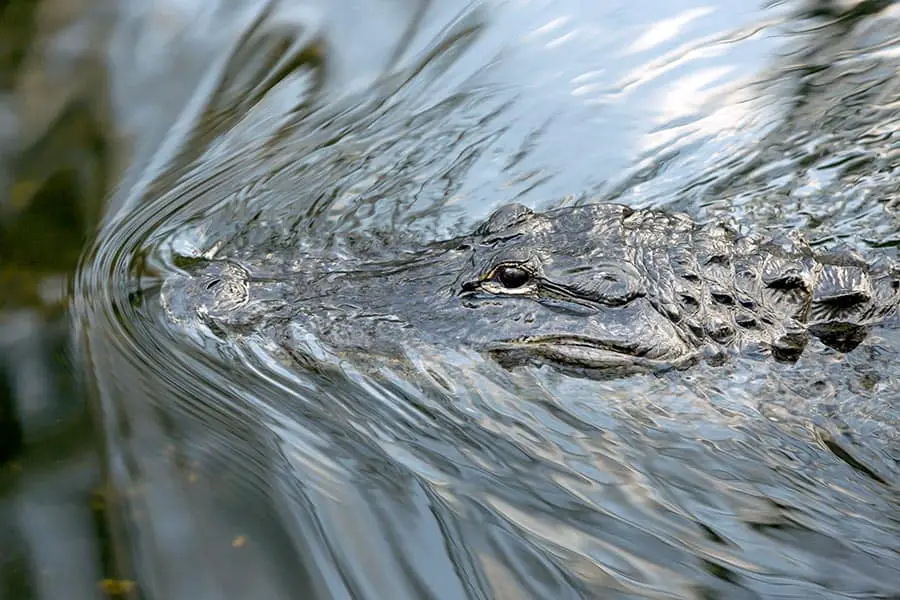
Are There Sharks in Lake Okeechobee?
While Lake Okeechobee is a freshwater lake, there have been sightings of bull sharks in the lake. Bull sharks have well-developed kidneys and a special gland that helps them survive in freshwater without losing their body’s salinity.
They’ve been spotted in several bodies of ocean-connected freshwater throughout the state, including the Indian River and Lake Okeechobee. However, bull shark sightings in Lake Okeechobee are pretty rare: you’re unlikely to be attacked by a bull shark in the lake.
Lake Okeechobee: Florida’s Freshwater Wonder
Most who come to Florida come for the expansive sandy beaches and the beautiful ocean views. However, Florida also has many beautiful bodies of freshwater, the largest of which is our very own Lake Okeechobee. So whether you’re planning to go out for a fun boat ride, troll the waters for fish, or paddle among the reeds and shallows, there’s plenty to do on the fresh waters of Lake Okeechobee.
